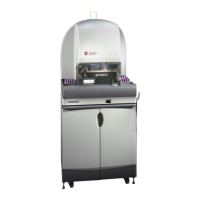
Do you have a question about the Beckman Coulter UniCel DxH 800 and is the answer not in the manual?
| Brand | Beckman Coulter |
|---|---|
| Model | UniCel DxH 800 |
| Category | Measuring Instruments |
| Language | English |
Details WARNING, CAUTION, and IMPORTANT alert types and their implications for operation.
Outlines risks of operator injury and necessary precautions for safe instrument use.
Warns about potential system compromise and failures due to improper use or unauthorized software.
Advises on product origin and the importance of current engineering revisions and information bulletins.
Step-by-step instructions on how to log off the instrument's System Manager interface.
Step-by-step instructions on how to log on to the instrument's System Manager interface.
Explains how to search topics, use favorites, resize, and print from the system's help feature.
Identifies and describes the main sections of the instrument's home screen for user orientation.
Labels and describes key components visible on the front of the Specimen Processing Module.
Details the major system components like SPM, System Manager, and their primary functions.
Lists the items typically housed within or associated with the optional floor stand unit.
Guides users to the System Status screen to get an overview of the instrument's basic information.
Explains how to interpret dates, times, and colored spheres indicating operational status.
Defines various status messages like Online, Offline, Standby, Calibration, Carryover, or Repeatability.
Details the procedure for starting the Daily Checks and reviewing its results and any necessary actions.
Step-by-step guide to initiate the shutdown process, including programming time in cleaner.
Explains how the shutdown cycle progresses and how to monitor remaining cleaning time via a countdown bar.
Details warming and manual mixing techniques for control tubes prior to analysis.
Outlines steps for putting the instrument online and processing controls via cassette or single-tube presentation.
Explains how to access and interpret control results, including data statistics and graphs.
Covers checking for out-of-range values, using Levey-Jennings graphs, and marking results as reviewed.
Describes using the Supplies icon and barcode scanner to automatically upload reagent supply information.
Allows configuration for single or dual diluent container usage and automatic switching.
Enables setting a percentage-based warning level for low reagent supply status.
States the necessity for the SPM to be online before commencing sample runs.
Covers proper specimen collection, loading into cassettes, and placing into the SPM for analysis.
Explains how to select the single-tube presentation icon and the subsequent dialog box.
Details placing the specimen, verifying details, and mixing it correctly for analysis.
Describes using the Diluent Dispense button to obtain diluent for making sample dilutions.
Guides on following screen prompts and preparing the fixed x5 dilution with sample and diluent.
Addresses handling specimens in or not in the pending list and editing test orders for predilution.
Details placing the specimen correctly and exiting the predilute procedure.
Guides on accessing the CBC Calibration screen and confirming the process initiation.
Covers setting aspirations, presentation mode, calibrator type, and inputting lot/expiration data.
Explains placing the calibrator in the cassette and completing the calibration sequence.
Instructions on reviewing calibration outcomes and performing verification if necessary.
Provides guidelines on when to perform instrument calibration and verification procedures.
Identifies and labels various components located in the front area of the instrument.
Identifies the mixing chambers within the AMTC module for different cell types.
Shows components related to single tube presentation, including the barcode camera and cradles.
Identifies and labels key components situated on the right side of the instrument.
Identifies and labels key components situated on the left side of the instrument.
Describes the flow cell, electrodes, and light scatter channels within the MTM.
Provides critical safety information regarding Class 3B laser radiation exposure.
Displays common cell populations identified in scatter plots for analysis.

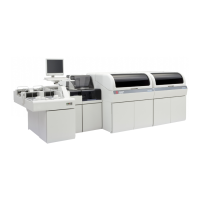
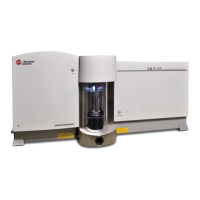
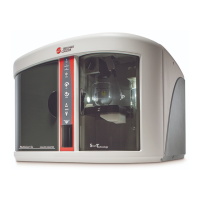


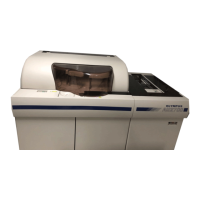
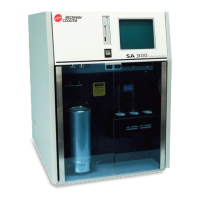
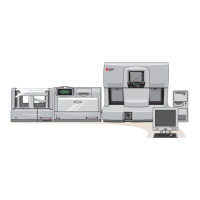
